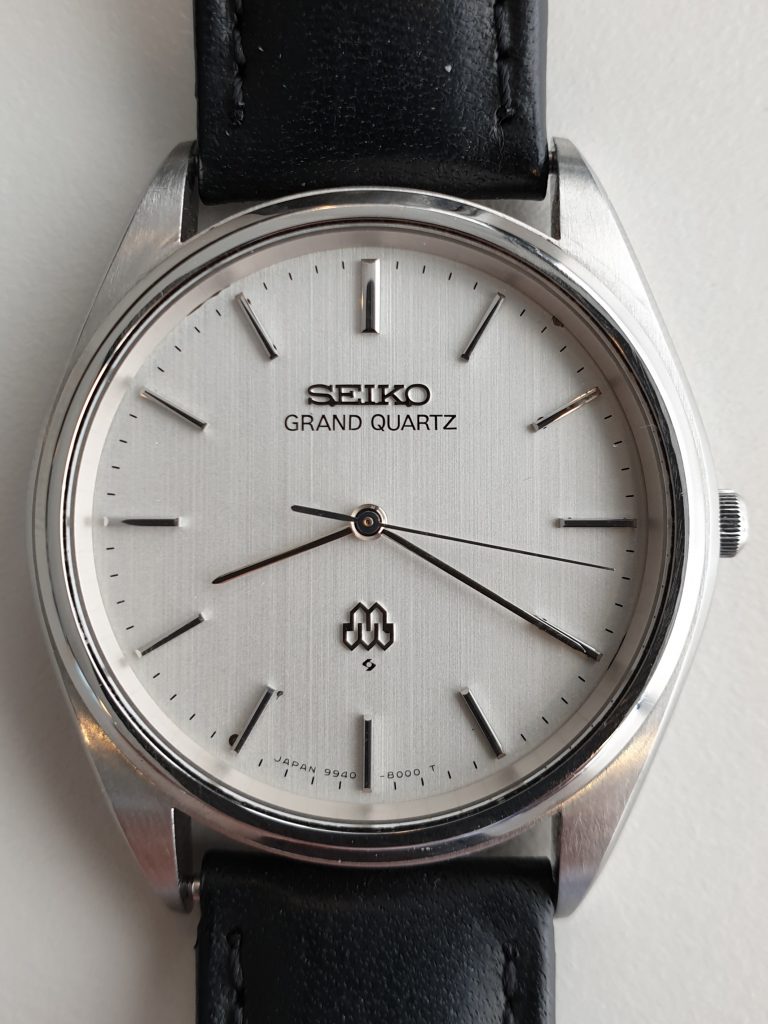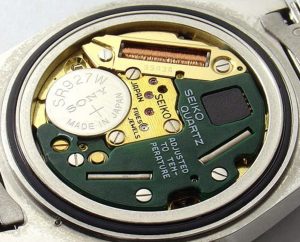| Brand | Seiko |
| Model | Grand Quartz (twin) |
| Year | 1979 |
| Caliber | Seiko 9940 Case nr 941490 |
| Details | Size 35/1x/18 (w/h/lug) Rare caliber! Battery SR927W |
| Links | Grand Seiko story – quartz time.. |
| Search | dba.dk / “Seiko grand quartz” |
Seiko Grand Quartz
At the end of the sixties the two top series of watches from Seiko were Grand Seiko and King Seiko. The introduction of Quartz watches at the end of 1969 not only meant that the mechanical watches from Switzerland was endangered, but also the Japanese.
Everyone wanted the latest and greatest, quartz! With a precision that was way better than any mechanical watch and the coolness with something modern, electronic on the wrist, Seiko also discontinued the Grand Seiko and the King Seiko lines around 1973-1974 (the GS label did not reappear until 1988 as quartz and 10 years later, 1998, as mechanicals with the 9S caliber). Instead the GS and KS series were replaced with Grand Quartz and King Quartz. Between 1974 and 1981 a large number of watches were introduced in these lines.
Quartz was a new thing and their was a steep evolution during this period, from the earliest with a precision of +/- 15 seconds per month to +/-10 seconds per year. In addition to this you also had the Superior line which in 1978-79 reached +/- 5 seconds a year. Approximately 25 different movements were developed during a period of less than 10 years.
Below some information from The Seiko Book and a battery list in a table:

In 1978 the caliber 9940 was first produced. With an accuracy rated at 10spy – the same as today’s Grand Seiko cal. 9F – the 9940 is shown for the first time in the JDM 1979 V2 catalogue, on page 6 priced at 75,000 Yen. In todays money that would be some 940 dollars.
In the twin models two quartz oscillators were set alongside each other; one was used to detect the temperature so that variations due to temperature change in the other oscillator could be compensated for.
The entire production of the Grand Quartz line spans a decade, 1975-1985. For caliber 9940/9943 however just 6 years. All of these watches have the strong lines and angles typical of the Seiko productions of the Seventies. The dial has the indices and the Seiko logo both applied and at six o’clock there is the “double honeycomb” logo, indicating the presence of a “twin quartz” caliber inside.
A feature of this particular caliber is the absence of day and date indication; maybe this is why watches running the 9940 are quite scarce, watches made with the 9943 (day/date) are more common. Remember, during the entire production run we have only two 9940 models, but thirteen with the 9943 and two with the date-only 9942.

